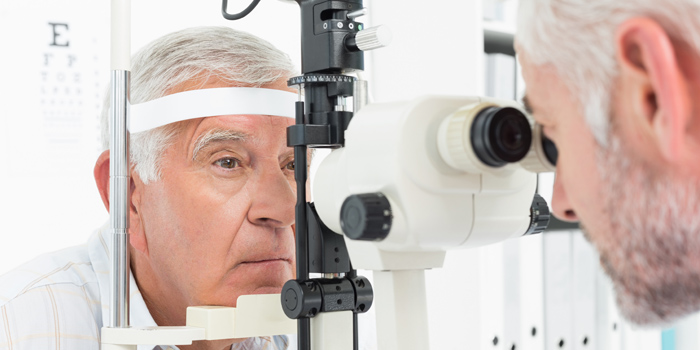In recognition of National Eye Exam Month during August, we take this opportunity to use this space to remind you of a few things you probably already know and, hopefully, suggest a few ideas you may not.
It is normal to notice changes in your vision as you age. Among the most common are losing the ability to see up close, distinguishing between close colors like blue vs. black and needing more time to adjust to a change in light levels. Fortunately, glasses, contact lenses and improved lighting can resolve these issues.
That being said, your risk for eye diseases increases with age. Given that some eye changes are more serious than others, getting regular eye exams will help you know the difference. It is very difficult to self-diagnose eye problems. Everyone over the age of 60 should have a dilated eye exam every year – particularly if you have diabetes or high blood pressure. A dilated exam is the only way to find the more common eye diseases while they are easier to treat and before they cause vision loss.
What will an eye professional look for?
There are a range of issues an eye professional can look for that can cause loss of sight in older adults. Most have few, if any, symptoms. Let’s review some of the most common:
- AMD (Age-related Macular Degeneration). AMD interferes with the sharp central vision required to see things distinctly. This can impact normal things like driving and reading. Treatments are available that will lower the chance of it getting worse, including some simple dietary supplements.
- Glaucoma. Glaucoma is a condition where there is too much fluid pressure in the eye. There are generally no symptoms or pain. If glaucoma is not treated it can lead to vision loss or even blindness. It can be treated with prescription eye drops, laser treatments or surgery.
- Cataracts. Cataracts are cloudy areas in the lens of the eye that cause blurred or hazy vision. Many cataracts are small and do not have much impact on your eyesight. Larger cataracts can significantly reduce vision. Cataract surgery has become very common and is very safe. It can not only restore vision, but often improve it beyond where it was before the surgery. Having a cataract is not necessarily a call for immediate surgery. Your eye professional will monitor it and determine when, if ever, you will need surgery.
- Diabetic Retinopathy. Diabetic retinopathy may occur if you have diabetes. This is the key reason that annual dilated eye exams are so important for diabetics. Preventing or controlling diabetic retinopathy include the things that are usually obvious for diabetics such as monitoring glucose levels, blood pressure and cholesterol. Laser surgery can prevent it from getting worse should it develop.
- Dry Eye. Should you feel a sandy feeling with stinging or burning, you may have Dry Eye. Dry Eye occurs when your tear glands are not working sufficiently. It is common among older people and, curiously, more often among women than men. Dry Eye is frequently treated with simple methods including using a home humidifier or air purifier, artificial tears or ointments. If severe, treatment options may include surgery, tear duct plugs or simply prescription medication.
Conclusion: What can you do to protect your vision?
Annually visiting an ophthalmologist is the best way to treat problems early and prevent vision loss. Before your visit, collect a list of any symptoms or concerns since your last exam. Bring a list of your current medications since some do have an impact on your eyes.
Realize that normal changes in your eye as you age do not usually mean your vision is damaged. On the other hand, subtle changes can be signs of a more serious problem. Regular check-ups will go a long way to tracking eye issues and, over time, guide your eye-care professional in ways to treat these problems.

